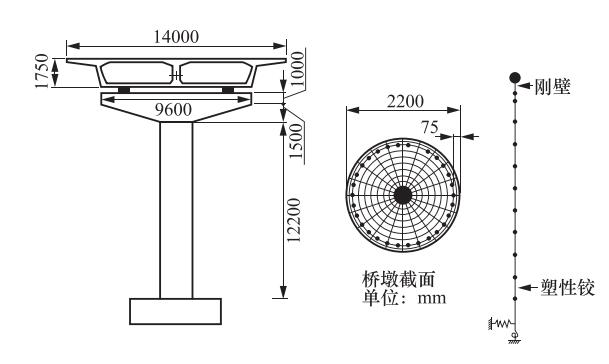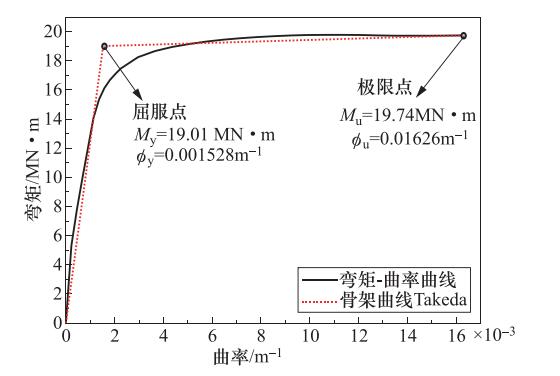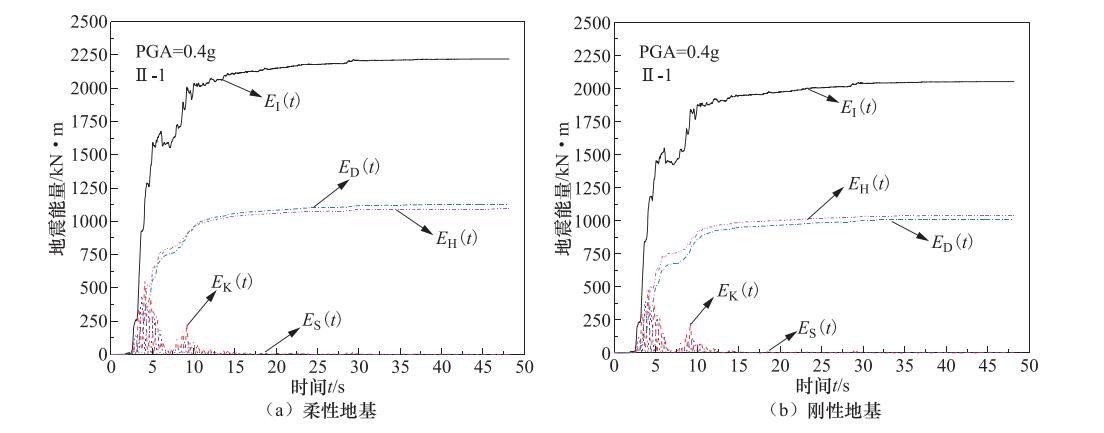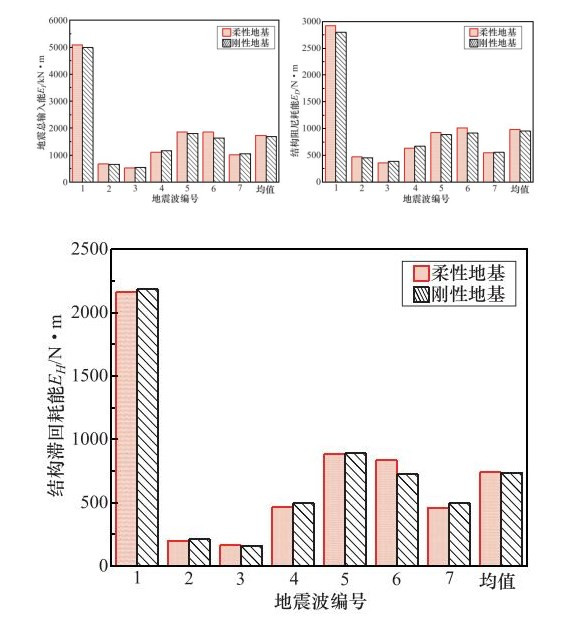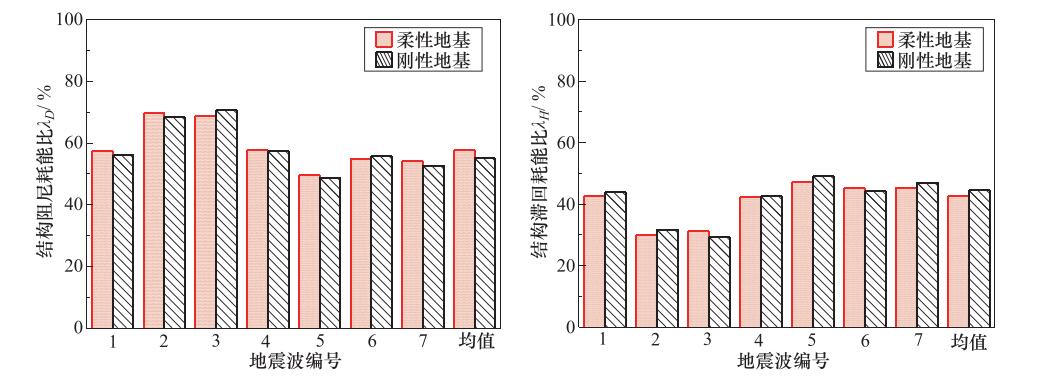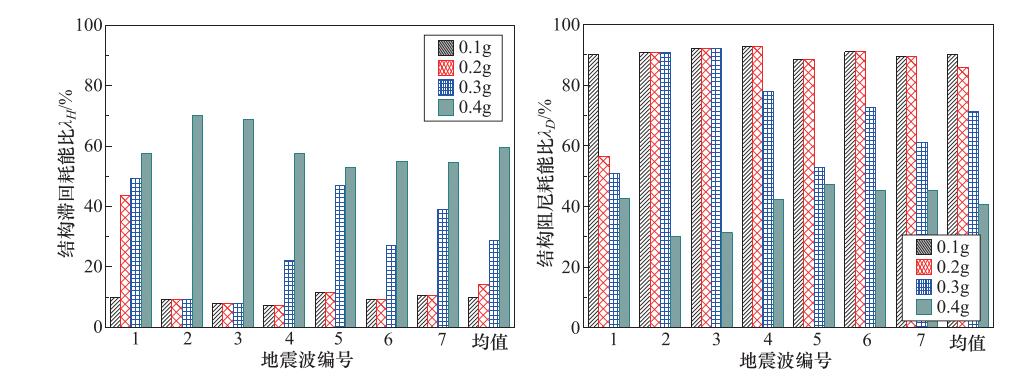Seismic Energy Response Analysis of Simple Supported Beam Bridge
-
摘要: 利用有限元软件SAP2000建立了某公路简支梁桥的有限元模型,以7条典型强震记录为输入,研究了公路简支梁桥的地震能量响应及其分配规律。结果表明:①地基柔性效应对公路简支梁桥的地震能量响应及其分配规律的影响较小;②当场地土质变软时,地震总输入能、结构阻尼耗能和结构阻尼耗能比均呈递增趋势,而结构滞回耗能和结构滞回耗能比则不断减小,即地基土体作为桥梁动力系统的一部分,增大了系统阻尼,并分担了部分非弹性变形;③随着PGA增大,输入结构的地震能量也增加,导致塑性铰的非弹性变形增加,即结构滞回耗能和结构阻尼耗能增大。Abstract: SAP2000 is used to build the finite-element analysis (FEA) model of one simple supported beam bridge. By inputting seven typical ground motions, the seismic energy response and its distribution are analyzed based on seismic energy response equation. The results are obtained as followings:①Effect of flexible foundation on seismic energy response and its distribution of simple supported beam bridge is less. ②As site become soften, the input seismic energy, hysteretic energy dissipation and hysteretic energy dissipation ratio increases, but damping energy dissipation and damping energy dissipation ratio decreases. It is because that damping is increased along with the foundation soil which can share part of inelastic deformation. ③With increasing of PGA, input seismic energy increases. As the result, the inelastic deformation of plastic hinge increases. It suggests that the hysteretic energy dissipation and damping energy dissipation increases too.
-
表 1 地震动记录参数
Table 1. Parameters of ground motions
序号 记录名称 断层距/km 震级 场地 PGA/g PGV/m·s-1 PGD/m Ⅱ-1 RSN4458_MONTENE.GRO_ULO090 3.97 7.1 Ⅱ 0.25 0.490 0.196 Ⅱ-2 RSN6886_DARFIELD_CACSN40E 14.48 7.0 Ⅱ 0.19 0.294 0.294 Ⅱ-3 RSN6886_DARFIELD_CACSN50W 7.58 7.0 Ⅱ 0.20 0.490 0.490 Ⅱ-4 RSN6897_DARFIELD_DSLCN27W 7.29 7.0 Ⅱ 0.26 0.392 0.294 Ⅱ-5 RSN6911_DARFIELD_HORCN18E 5.07 7.0 Ⅱ 0.45 1.078 0.490 Ⅱ-6 RSN6960_DARFIELD_RHSCN86W 13.64 7.0 Ⅱ 0.19 0.294 0.196 Ⅱ-7 RSN8124_CCHURCH_RHSCS04W 9.05 6.2 Ⅱ 0.25 0.294 0.098 表 2 各类场地柔性地基模型的土弹簧刚度
Table 2. Stiffness of soil-spring of flexible models at four sites
场地 剪切波速/m·s-1 有效剪切模量/MPa 平动刚度/kN·m-1 转动刚度/kN·m·rad-1 Ⅱ 375 212.8 150.83×105 56.33×106 Ⅲ 200 57.9 39.98×105 14.93×106 Ⅳ 115 13.9 8.52×105 3.18×106 表 3 场地类型对简支梁桥的地震能量响应及分配规律的影响
Table 3. Effect of site on seimic energy response and its distribution
场地 剪切波速/m·s-1 基阶周期T/s 地震总输入能EI/kN·m 滞回耗能EH/kN·m 阻尼耗能ED/kN·m 滞回耗能比λH/% 阻尼耗能比λD/% Ⅰ 750 1.02 688.64 270.62 418.02 39.30 60.70 Ⅱ 375 1.08 733.10 282.98 450.12 38.60 61.40 Ⅲ 200 2.36 1100.22 225.52 874.70 20.50 79.50 Ⅳ 115 4.73 1176.15 138.59 1037.56 11.78 88.22 -
卜一, 吕西林, 周颖等, 2009.钢框架-混凝土核心筒混合结构滞回耗能比研究.结构工程师, 25(1):55-61, 74. http://d.old.wanfangdata.com.cn/Periodical/jggcs200901012 经杰, 叶列平, 钱稼茹, 2003.基于能量概念的剪切型多自由度体系弹塑性地震位移反应分析.工程力学, 20(3):31-37. http://d.old.wanfangdata.com.cn/Periodical/gclx200303006 李宇, 2010.考虑残余位移和土-结构相互作用的桥梁结构基于性能的抗震设计及评估.北京: 北京交通大学. 刘哲锋, 沈蒲生, 2009.高层混合结构滞回耗能比的研究.地震工程与工程振动, 29(2):73-78. http://d.old.wanfangdata.com.cn/Periodical/dzgcygczd200902011 王建民, 2006.基于概率的桥梁结构抗震性能研究.北京: 北京交通大学. 肖明葵, 2004.基于性能的抗震结构位移及能量反应分析方法研究.重庆: 重庆大学. 中华人民共和国交通运输部, 2008.公路桥梁抗震设计细则(JTG/T B02-01-2008).北京:人民交通出版社. 中华人民共和国交通运输部, 2007.公路桥涵地基与基础设计规范(JTG D63-2007).北京:人民交通出版社. American Society of Civil Engineers, 2000. Prestandard and commentary for the seismic rehabilitation of buildings. FEMA 356, Washington: Federal Emergency Management Agency. Amiri V. J., Amiri G. G., Ganjavi B., 2008. Seismic vulnerability assessment of multi-degree-of-freedom systems based on total input energy and momentary input energy responses. Canadian Journal of Civil Engineering, 35(1):41-56. doi: 10.1139/L07-085 Arroyo D., Ordaz M., 2007. On the estimation of hysteretic energy demands for SDOF systems. Earthquake Engineering & Structural Dynamics, 36(15):2365-2382. doi: 10.1002/eqe.93/abstract Chou C. C., Uang C. M., 2003. A procedure for evaluating seismic energy demand of framed structures. Earthquake Engineering & Structural Dynamics, 32(2):229-244. http://home.iitk.ac.in/~vinaykg/Iset469.pdf Housner G. W., 1956. Limit design of structures to resist earthquakes. In: Proceedings of the 1st World Conference on Earthquake Engineering. California: Earthquake Engineering Research Institute. Surahman A., 2007. Earthquake-resistant structural design through energy demand and capacity. Earthquake Engineering & Structural Dynamics, 36(14):2099-2117. http://d.old.wanfangdata.com.cn/NSTLQK/NSTL_QKJJ028281987/ -




 下载:
下载:
